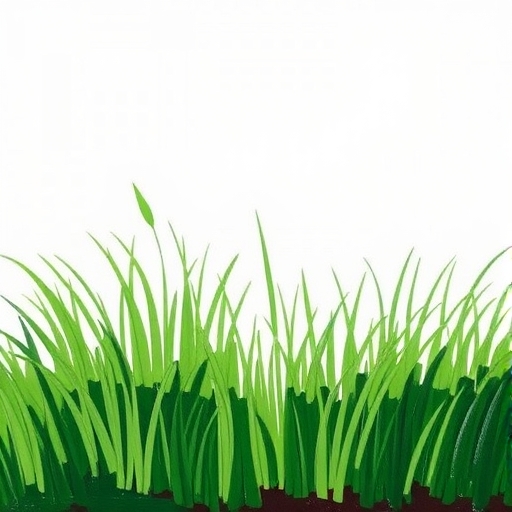How to Paint Grass – A Guide
Painting grass can be an excellent way to enhance your lawn’s appearance, especially in regions where maintaining a lush, green lawn is challenging. Whether you’re preparing for a special event, trying to cover up unsightly brown patches, or simply want to give your yard a vibrant touch, this guide will walk you through the entire process of painting grass.
Why Paint Grass?
Before diving into the how-to, it’s essential to understand the benefits of painting grass:
-
- Instant Greening: A quick solution to browning or patchy grass.
- Aesthetic Appeal: Improves the visual appeal of your lawn for events or photos.
- Cost-Effective: Often more affordable than reseeding or laying new sod.
- Environmental Benefits: Can reduce the need for excessive watering or fertilization.
Materials Needed
To paint grass effectively, you will need the following materials:
Essential Supplies
-
- Grass Paint: Look for biodegradable, non-toxic options specifically designed for lawns.
- Sprayer or Paint Roller: A garden sprayer or roller can help distribute the paint evenly.
- Protective Gear: Gloves, goggles, and a mask to protect yourself from fumes.
- Water: For cleaning tools and diluting paint if necessary.
- Drop Cloths: To protect surrounding areas from overspray.
Optional Supplies
-
- Stencil Templates: For creating designs or patterns.
- Measuring Tape: For planning your painting area.
- Rake: To prepare the grass before painting.
Preparing Your Lawn
Step 1: Assess the Condition of Your Grass
Before painting, evaluate the health of your grass. If it’s dying or diseased, painting won’t solve the underlying issues. Consider the following:
-
- Check for pests or disease.
- Evaluate soil health.
- Assess watering needs.
Step 2: Mow the Grass
Mowing your lawn before painting is crucial:
-
- Mow to a height of 1-2 inches for optimal paint absorption.
- Remove any clippings to ensure a clean surface.
Step 3: Rake and Clean
Clear away debris:
-
- Rake up leaves, twigs, and other debris.
- Use a leaf blower for an even cleaner surface.
Step 4: Water the Lawn
Watering helps prepare the grass for paint:
-
- Water the lawn a day before painting to ensure it’s hydrated.
- Avoid painting immediately after watering; the grass should be dry to the touch.
Painting Techniques
Step 1: Choose Your Paint
Select the right type of grass paint:
-
- Water-Based Paint: Easier to apply and clean up, dries quickly.
- Dye: Often more natural-looking but may require multiple applications.
Step 2: Prepare the Paint
Follow the manufacturer’s instructions for mixing:
-
- If using a concentrated dye, dilute it with water as directed.
- Stir thoroughly to avoid clumping.
Step 3: Application Methods
You have several options for applying the paint:
Sprayer Method
1. Fill the Sprayer: Pour the mixed paint into your garden sprayer.
2. Adjust Settings: Set the nozzle to a fine mist for even coverage.
3. Start Spraying: Begin at one corner of your lawn and move in straight lines, overlapping slightly with each pass.
Roller Method
1. Fill the Roller Tray: Pour paint into the tray.
2. Load the Roller: Dip the roller into the paint and roll off excess.
3. Roll the Grass: Apply paint evenly, working in sections.
Step 4: Allow to Dry
-
- Let the paint dry according to the manufacturer’s instructions (usually a few hours).
- Avoid walking on the lawn until it’s fully dry.
Maintenance After Painting
To maintain the appearance of your painted grass, consider these tips:
-
- Watering: Lightly water the lawn after the paint has dried to help it settle.
- Mowing: Wait at least two weeks before mowing to allow the paint to adhere well.
- Reapplication: Depending on wear and tear, you may need to reapply paint every few months.
Comparison of Grass Paints
| Type of Paint | Durability | Application Method | Drying Time | Environmental Impact |
|---|---|---|---|---|
| Water-Based Paint | Moderate | Sprayer/Roller | 1-3 hours | Biodegradable options available |
| Dye | High | Sprayer | 2-4 hours | Natural ingredients |
| Synthetic Paint | High | Sprayer/Roller | 1-2 hours | Potentially harmful |
Common Challenges and Solutions
Uneven Coverage
-
- Solution: Ensure even application by using a sprayer and moving at a consistent speed.
Fading
-
- Solution: Choose high-quality paint and avoid excessive watering immediately after application.
Grass Damage
- Solution: Use non-toxic, biodegradable paint to minimize harm to the grass.
Frequently Asked Questions (FAQ)
How long does painted grass last?
Painted grass can last anywhere from a few weeks to several months, depending on weather conditions and foot traffic.
Is grass paint safe for pets and children?
Most grass paints are non-toxic and safe for pets and children, but always check the label before use.
Can I paint my grass in the winter?
Yes, you can paint grass in winter, but ensure that it is dry and free of snow. The color may not be as vibrant due to lower light levels.
Can I mix different colors of grass paint?
Yes, you can mix colors to achieve a custom shade, but test a small area first to ensure the desired result.
How do I remove grass paint?
To remove grass paint, you can use a power washer or a strong raking method over time. However, natural fading is often the best solution.
Conclusion
Painting grass can be a simple and effective way to enhance your lawn’s appearance. With the right materials, preparation, and techniques, you can achieve a vibrant green lawn that looks great for any occasion. Remember to choose high-quality paint, follow the application instructions carefully, and maintain your lawn for the best results. Happy painting!

